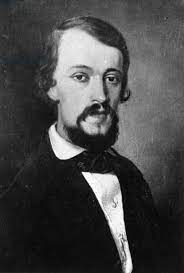 News
News
Doctors Who Died for Discovery
Medical Martyrs of Infection and Science
Throughout history, some of the greatest advances in medicine have come at a tragic cost — the lives of the very doctors researching deadly diseases. While Hippocrates is rightly known as the father of modern medicine, countless others made the ultimate sacrifice in pursuit of knowledge, often by infecting themselves or working in deadly conditions.
Medical science owes much to these unsung heroes, particularly the pathologists and parasitologists of the 19th and early 20th centuries. They faced infections we now understand and treat — but they did not. This post remembers a few of those brave pioneers.
William Harvey – A Kentish Pioneer
William Harvey, born in Folkestone, Kent in 1578, was the first physician to accurately describe the human circulatory system and the heart’s function as a pump. A statue in his honour stands in Langhorne Gardens, Folkestone, and the hospital in Ashford is named after him.
While Harvey survived his discoveries, those who followed often did not.
Theodor Bilharz (1825–1862)
A German physician, Bilharz discovered the parasitic worm Schistosoma haematobium, which causes schistosomiasis (or bilharzia), a major killer in Egypt and other tropical regions.
He died in Cairo aged just 37, likely of typhoid fever — a sacrifice that led to one of tropical medicine’s greatest breakthroughs.
Jesse William Lazear (1866–1900)
An American doctor and part of the U.S. Army Yellow Fever Commission in Cuba, Lazear helped prove that mosquitoes transmit yellow fever. In a tragic twist, he died from yellow fever after allegedly allowing himself to be bitten during his research.
His work transformed public health responses to mosquito-borne diseases.
Howard Taylor Ricketts (1871–1910)
Ricketts discovered Rickettsia prowazekii, the bacterium that causes epidemic typhus. His name lives on in the bacterial order Rickettsiales. He died from typhus while researching an outbreak in Mexico.
His work paved the way for modern treatments and vaccines for vector-borne diseases.
Stanislaus von Prowazek (1875–1915)
An Austrian microbiologist, Prowazek worked alongside Ricketts to identify Rickettsia prowazekii. He studied typhus in Serbia and Constantinople before succumbing to the disease himself in 1915, aged just 40.
He is remembered in the name of the organism they helped identify.
A Legacy of Sacrifice
These were just a few of the many who risked — and lost — their lives in the name of medical science. While war heroes are rightly remembered, these figures often go unnoticed despite saving millions of lives with their discoveries.
Their work has helped shape everything from vaccine development to infection control. Without them, we wouldn’t have the advanced understanding — or technologies — we now use to protect patients, such as our own mobile infectious patient isolation facility.
Further Reading
- History of Medicine – Britannica
- Source: The Body: A Guide for Occupants, Bill Bryson (2019)
- https://www.bm-ambulance-service.co.uk/999-family/london-ambulance-service-history/
- The evolution of the London Ambulance Service(Opens in a new browser tab)
 BM
BM 